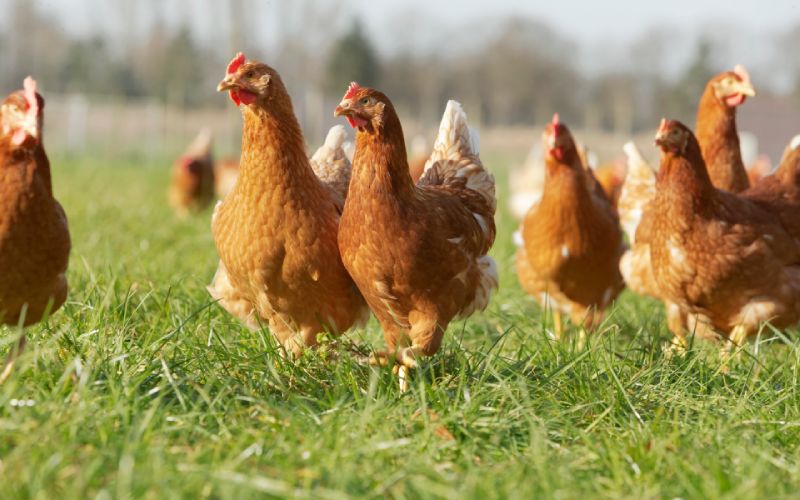
Commercial poultry production in Kenya dates back to the 1970s. It is estimated that the poultry population stands at 80 million, with 70 per cent being indigenous backyard flock. The driving factors for this industry have been linked to rapid urbanisation, growth of the middle-class citizens, rise in quick-service restaurants like KFC, Nando’s, and Chicken-Inn, and the demand for affordable source of proteins. Here are the most common breeds of chickens, their strengths and weaknesses, and how they are reared.
- Parent-stock Breeding stock lines
Big breeding companies globally are Cobb-Vantress, Hendrix, and Aviagen. These companies stock pedigree lines and sell Parent-stock. In Kenya, top breeding companies stock Parent-stock breeders. These are elite birds, very expensive, and have great genetic potential for high egg production, fast meat conversion, high egg quality, good fertility and hatchability.
Their population is about 500,000. The major broiler breeders in Kenya are Cobb-500, Arbo Acres, Hubbard, and Ross 308 while the layer breeder stocks are ISA Brown, Hy-line, Lohmann, and Shaver. Although these types of birds are great, they require an intensive management system because they are prone to extreme weather changes, diseases, poor bio-security, and variable feed quality. They require to be reared in isolated sites away from local poultry, slaughterhouses, high traffic, water pans, and urban centres.
- White Commercial Broiler meat chicken
These types of birds are reared as broilers by our farmers and sold as fresh or frozen capons, bone-in, boneless, and cut-ups. The main breeds are Cobb-500, Arbor-Acre, Ross 308 and Hubbard sold by the main hatcheries in Kenya. These birds are reared in open-sided units with some degree of bio-security imposed on them. Most farmers keep between 500 and 1,000 birds. The current population is about 6 million chicks. The flock has livability of 93 per cent, slaughtered at 33-37 days and weighing on average 1.75kg live. The main challenge is poor bio-security, high feed cost and limited market opportunity.
- Commercial Layer breed
These birds are reared typically for table egg production. The most common breeds here include ISA Brown, Hy-line, Lohmann and Shavers. They are brown shell egg producers. The main advantage of these breeds is the high peak egg production, prolonged production period, good egg quality, high livability and efficient feed conversion. They are however prone to infectious respiratory diseases, cannibalism, worm infestation, are highly irritable, and will drop egg production at the slightest change in environment. We have a population of eight million birds.
- Kenbro
This is a red-feathered bird with broiler and layer characteristics. This bird is robust, disease-resistant, and possesses a very rounded conformation which results in a presentable, well-finished chicken with excellent taste. When managed as a meat bird with high-quality feed, it can achieve a live weight of 1.5kg in seven weeks. This bird is ideal for live market sale and easily replaces indigenous chickens. As a layer with regulated body weights, this bird will come to point of laying at 22-24 weeks and produce 200 eggs/hen per annum.
- Sasso slow-growing exotic lines
This is a dual-purpose slow-growing breed that comes from Hubbard in France and is produced here by a Western seed company. It can produce 150-200 eggs/hen per year depending on the management system. It is mostly sold for meat. It is disease resistant and can be released into the field to scavenge with minimal supplementation. The advantages and challenges is similar to Kenbros.
- Kuroiler
The Kuroiler chicken is a dual-purpose hybrid breed developed in India. The Kuroiler chickens are dual purpose breed suitable for meat and egg production. They are economical breed and can live eating the kitchen and agricultural waste. Native Indian hens lay only about 40 eggs/hen per year. Whereas the Kuroiler hens can produce around 150 eggs per year by consuming agricultural and kitchen waste, Kuroiler chickens need to feed continuously and they are fast growing chicken breed. The hens are not broody.
- Rainbow rooster
Rainbow rooster is a fast-growing Indian chicken breed. It is bred by Indbro Research and breeding farms in India. It is multicolored cross breed, suitable for backyard rearing and organic chicken production. It lays more eggs than the indigenous chicken.
- Kari Breed
Developed by the Kenya Agricultural and Livestock Research Organization (Kalro). Naivasha Poultry Development Institute, the new breed known as kienyeji chicken, achieves a weight of 1.5 kg in five months. According to Kalro, the new breed is resistant to diseases and parasites and is better suited for local climatic conditions.
[The writer is Head Vet at Kenchic]
 The Standard Group Plc is a
multi-media organization with investments in media platforms spanning newspaper
print operations, television, radio broadcasting, digital and online services. The
Standard Group is recognized as a leading multi-media house in Kenya with a key
influence in matters of national and international interest.
The Standard Group Plc is a
multi-media organization with investments in media platforms spanning newspaper
print operations, television, radio broadcasting, digital and online services. The
Standard Group is recognized as a leading multi-media house in Kenya with a key
influence in matters of national and international interest.
 The Standard Group Plc is a
multi-media organization with investments in media platforms spanning newspaper
print operations, television, radio broadcasting, digital and online services. The
Standard Group is recognized as a leading multi-media house in Kenya with a key
influence in matters of national and international interest.
The Standard Group Plc is a
multi-media organization with investments in media platforms spanning newspaper
print operations, television, radio broadcasting, digital and online services. The
Standard Group is recognized as a leading multi-media house in Kenya with a key
influence in matters of national and international interest.


